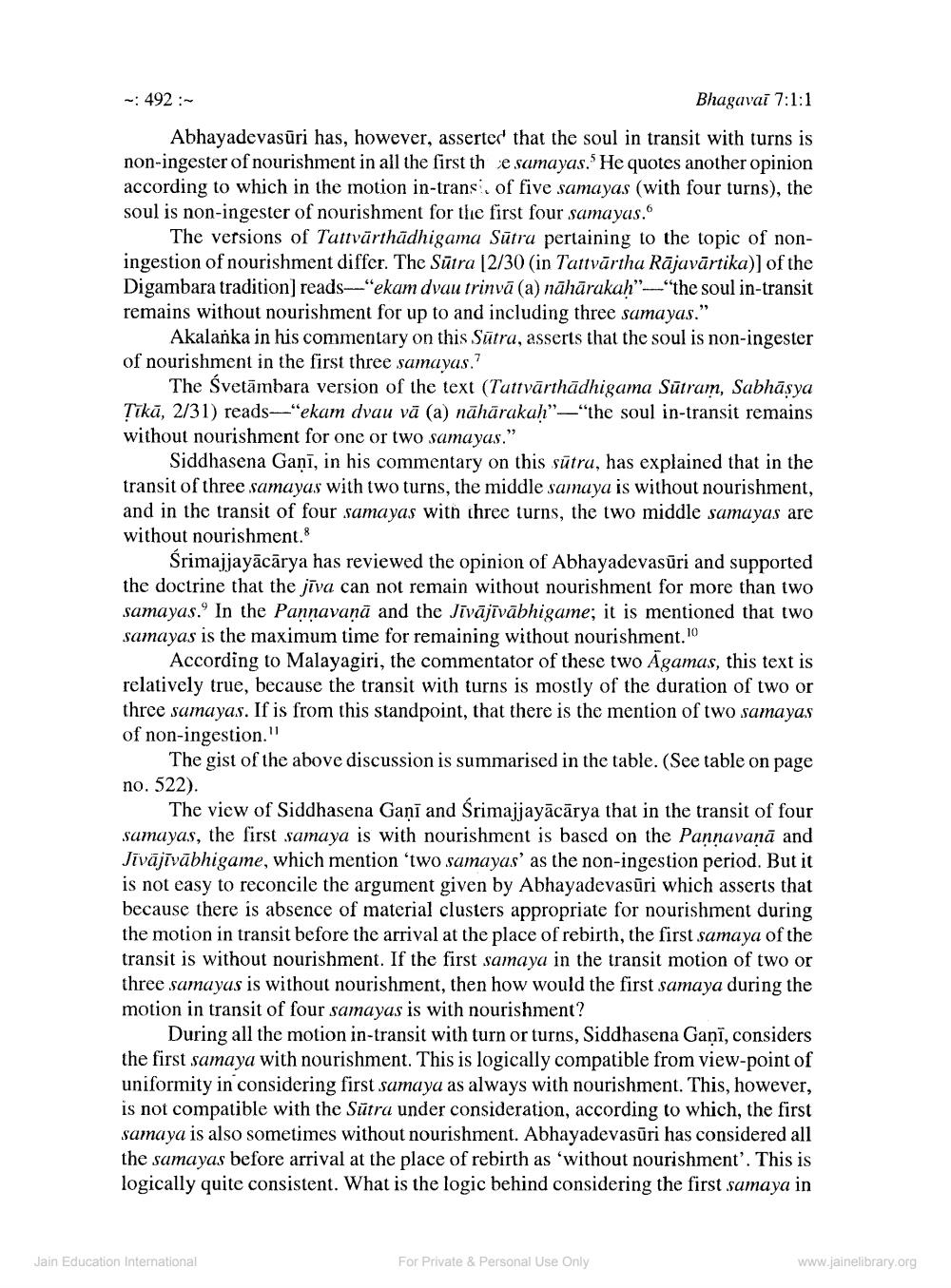________________
-: 492 :
Bhagavai 7:1:1
Abhayadevasūri has, however, asserter that the soul in transit with turns is non-ingester of nourishment in all the first the samayas.' He quotes another opinion according to which in the motion in-trans. of five samayas (with four turns), the soul is non-ingester of nourishment for the first four samayas.
The versions of Tattvārthādhigama Sūtra pertaining to the topic of noningestion of nourishment differ. The Sūtra [2/30 (in Tattvārtha Rājavārtika)] of the Digambara tradition) reads--"ekam dvau trinvā (a) nāhārakah"-"the soul in-transit remains without nourishment for up to and including three sumayas."
Akalanka in his commentary on this Sūtra, asserts that the soul is non-ingester of nourishment in the first three samayas.?
The Svetāmbara version of the text (Tattvārthādhigama Sūtram, Sabhāsya Tīkā, 2/31) reads-"ekam dvau vā (a) nāhārakah”—"the soul in-transit remains without nourishment for one or two samayas."
Siddhasena Gaṇī, in his commentary on this sūtru, has explained that in the transit of three samayas with two turns, the middle samaya is without nourishment, and in the transit of four samayas with three turns, the two middle samayas are without nourishment.
Śrimajjayācārya has reviewed the opinion of Abhayadevasūri and supported the doctrine that the jīva can not remain without nourishment for more than two samayas. In the Pannavanā and the Jivājīvābhigame; it is mentioned that two samayas is the maximum time for remaining without nourishment.
According to Malayagiri, the commentator of these two Agamas, this text is relatively true, because the transit with turns is mostly of the duration of two or three samayas. If is from this standpoint, that there is the mention of two samayas of non-ingestion."
The gist of the above discussion is summarised in the table. (See table on page no. 522).
The view of Siddhasena Gani and Srimajjayācārya that in the transit of four samayas, the first samaya is with nourishment is based on the Pannavanā and Jīvājīvābhigame, which mention 'two samayas' as the non-ingestion period. But it is not easy to reconcile the argument given by Abhayadevasūri which asserts that because there is absence of material clusters appropriate for nourishment during the motion in transit before the arrival at the place of rebirth, the first samaya of the transit is without nourishment. If the first samaya in the transit motion of two or three samayas is without nourishment, then how would the first samaya during the motion in transit of four samayas is with nourishment?
During all the motion in-transit with turn or turns, Siddhasena Gani, considers the first samaya with nourishment. This is logically compatible from view-point of uniformity in considering first sumaya as always with nourishment. This, however, is not compatible with the Sūtra under consideration, according to which, the first samaya is also sometimes without nourishment. Abhayadevasūri has considered all the sumayas before arrival at the place of rebirth as 'without nourishment'. This is logically quite consistent. What is the logic behind considering the first samaya in
Jain Education International
For Private & Personal Use Only
www.jainelibrary.org




